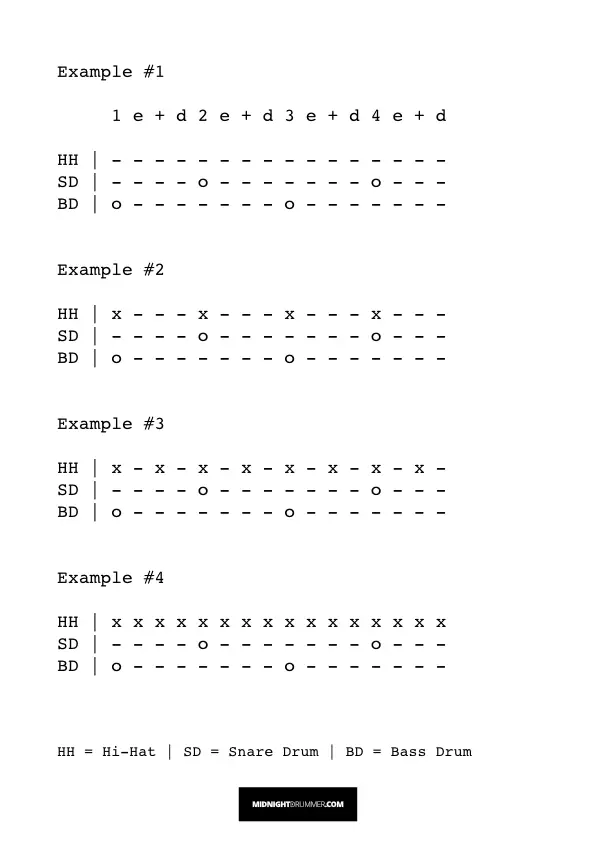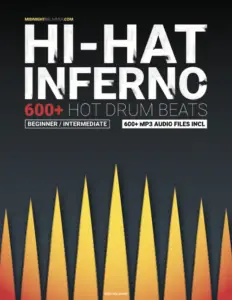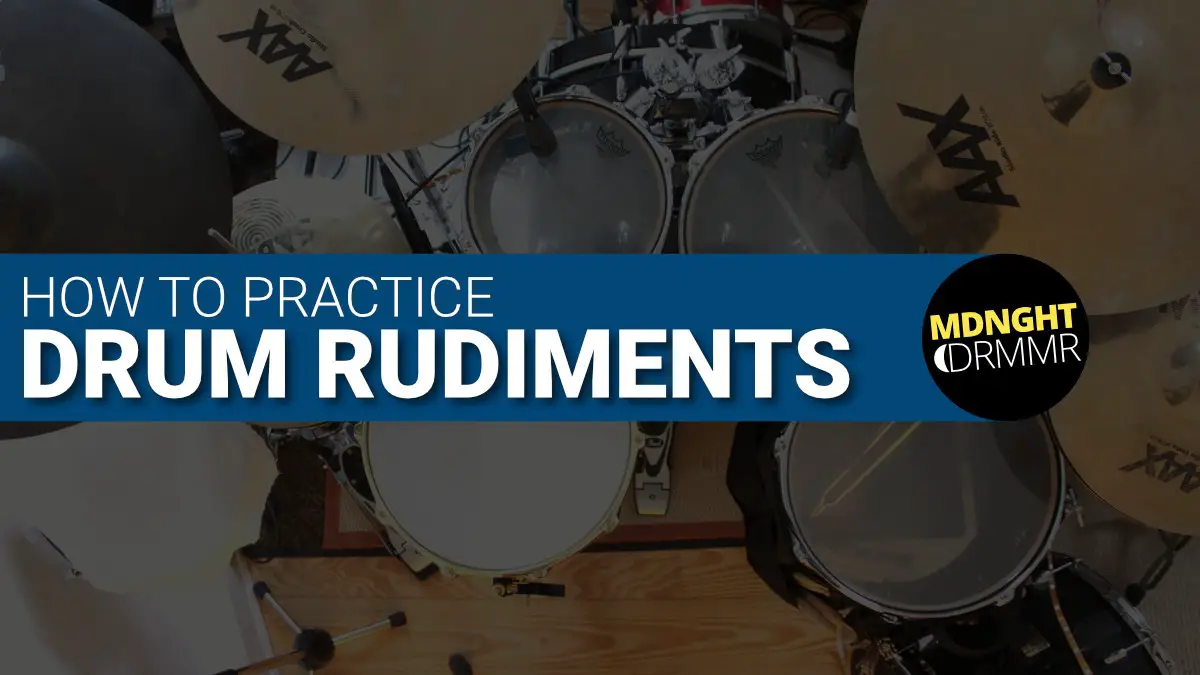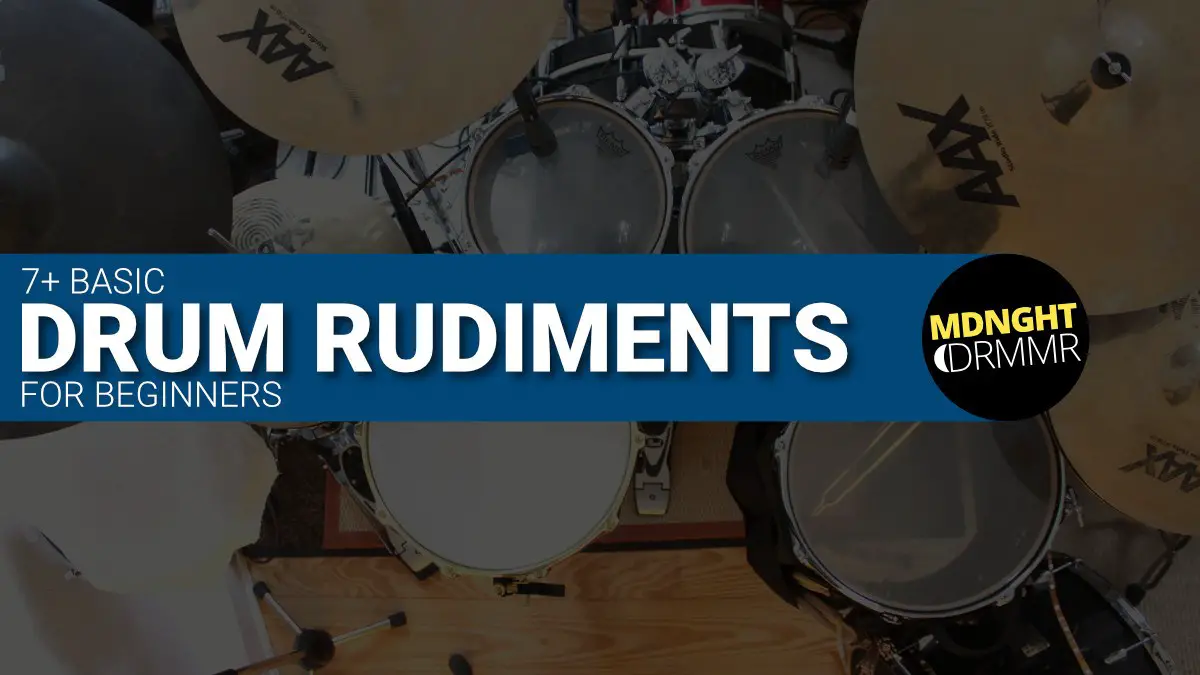Good morning, and thanks for joining me on Midnightdrummer.com today!
In this blog post, I'd like to explain on how to read drum tabs and what the pros and cons are in comparison to conventional drum sheet music.
Are there any benefits of using drum tabs at all, or should you start learning drum sheet music right from the beginning of your career as a drummer?
Let's see!
What are drum tabs?
Drum tabs and drum sheet music are both ways of writing down drum notation.
Most beginner drummers think, that drum tabs are a much simpler way of writing down drum notation, and therefore they are used quite a lot by beginner and intermediate drummers.
The drum tab system is very easy to understand:
For each drum set part (instrument) – e.g., hi-hat, snare drum, bass drum etc. – you need to create a new row as you can see here:

Easy drum tabs system
This example of a drum tab system shows the beats on top of the measure:
“1 e + d 2 e + d 3 e + d 4 e + d”, which can be used to count 16th notes.
There's a row for HH = Hi-Hat, SD = Snare Drum and BD = Bass Drum.
If you want to notate more instruments, you simply have to add more rows.
Easy!
At the moment, the drum tab example from above doesn't show any “action”.
Now let's see how it looks like, when we add a few kicks, snares and hi-hat notes.
How to read drum tabs
Here are 3 simple drum grooves written as drum tabs:

4 easy drum grooves written as drum tabs
Example #1:
In this drum groove, you only need to play the bass- and the snare drum.
- Bass Drum on “1” and on “3” (written as an “o”)
- Snare Drum on “2” and on “4” (written as an “o”)
Above example #1 you can also see the beats which I have written down in the following way: “1 e + d 2 e + d 3 e + d 4 e + d”.
This is how I count sixteenth notes, but there are different ways on how to pronounce them while playing.
The beats will help you get an idea of where you are (chronologically).
Example #2:
In example #2 we will add a hi-hat note on each quarter note shown as a little “x”.
Example #3:
In this example, the hi-hat plays eighth notes on: “1 + 2 + 3 + 4 +”.
Snare- and bass drum continue playing the same as in the prior examples.
Example #4:
In this example, the hi-hat plays sixteenth notes on:
“1 e + d 2 e + d 3 e + d 4 e + d”.
Easy!
Please let me know in the comments below if you need help with these exercises.
Drum sheet music vs. drum tabs
Drum sheet music is a more complex way of writing down drum notation, and is typically used by advanced drummers and is the basis to read and practice any drum book you buy.
Here are the same drum grooves which you already know from the drum tabs above. This time, written in the conventional way:

Drum sheet music
As mentioned, these are the same drum groove examples in another way of writing drum notes.
To be honest; before you continue using drum tabs, you should have a look at my blog post about how to read drum sheet music.
After that – I promise – you will know which one is the more useful and maybe even easier way to notate drums.
How to write drum tabs
Writing drum tabs is easy!
You simply need a text editing software like Pages or Microsoft Word where you are able to choose the typography.
The most typographies, like Arial, don't work in terms of writing drum tabs:

Arial creates ugly drum tabs.
Instead, you should use Courier, which I have used in the examples above. Creating good-looking drum tabs with Courier is easy.
Letters, spaces, and numbers stay where you want them to be!
Conclusion
Drum tabs are an easy way on how to write down drum notes and ideas which come up while playing drums.
It is a good way to learn how drum grooves and drum fills are built and how they work.
Still, I would recommend getting used to conventional drum sheet music as soon as possible. Reading, writing and working with conventional drum sheet music isn't more difficult than drum tabs.
If you are going to buy drum books, you will have to get used to reading drum sheet music anyway.
If you need help reading drum tabs or anything else related to this little tutorial, please let me know in the comments.
Enjoy playing drums and talk soon!









